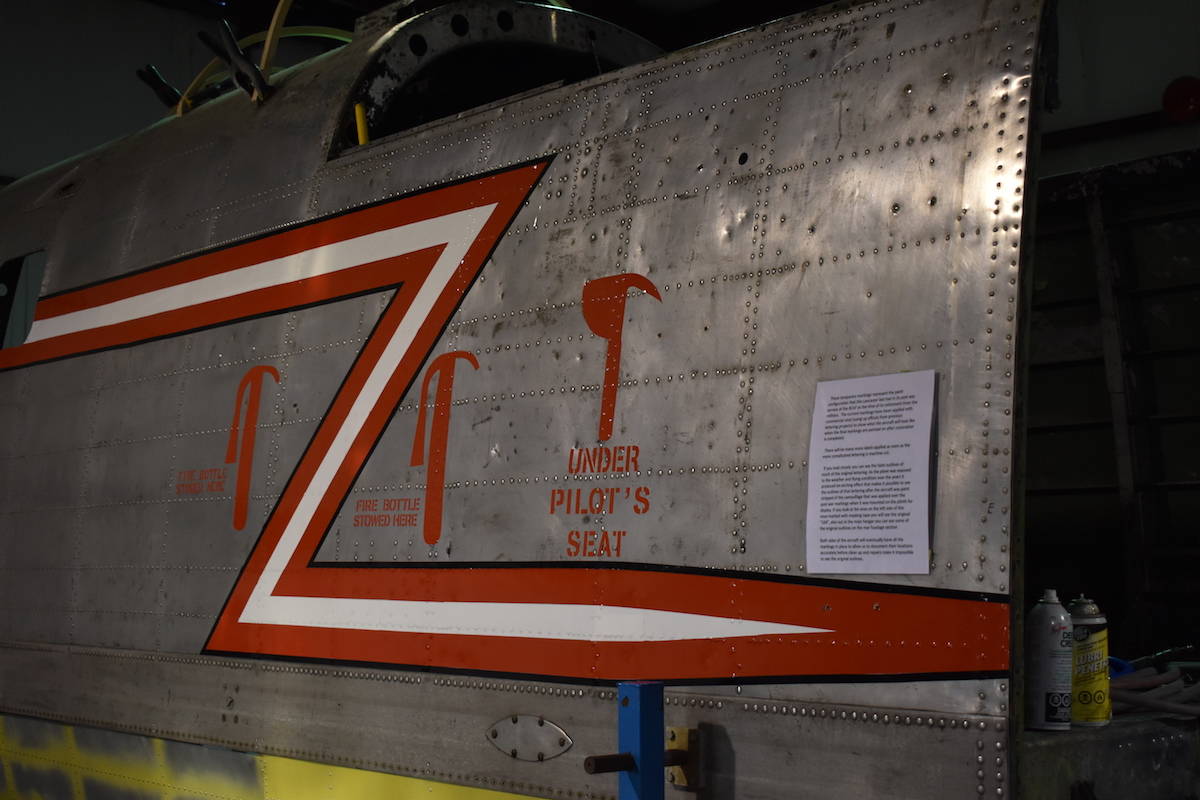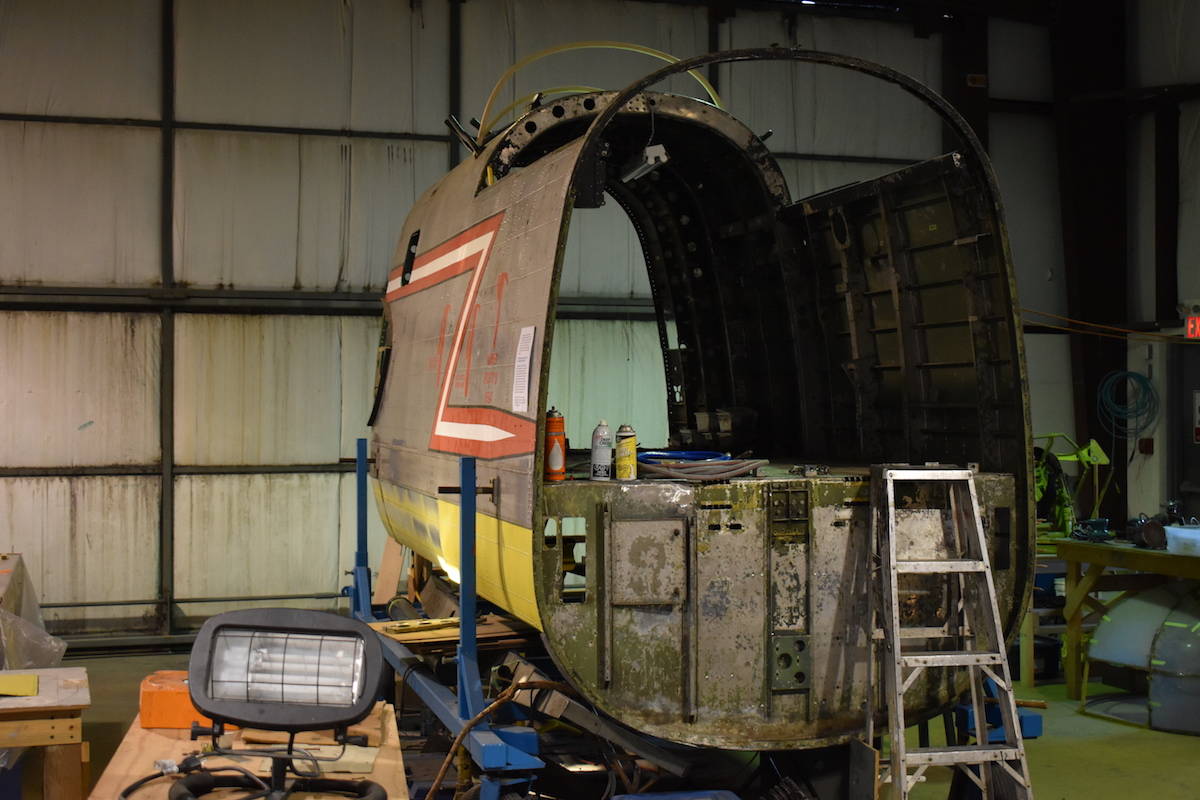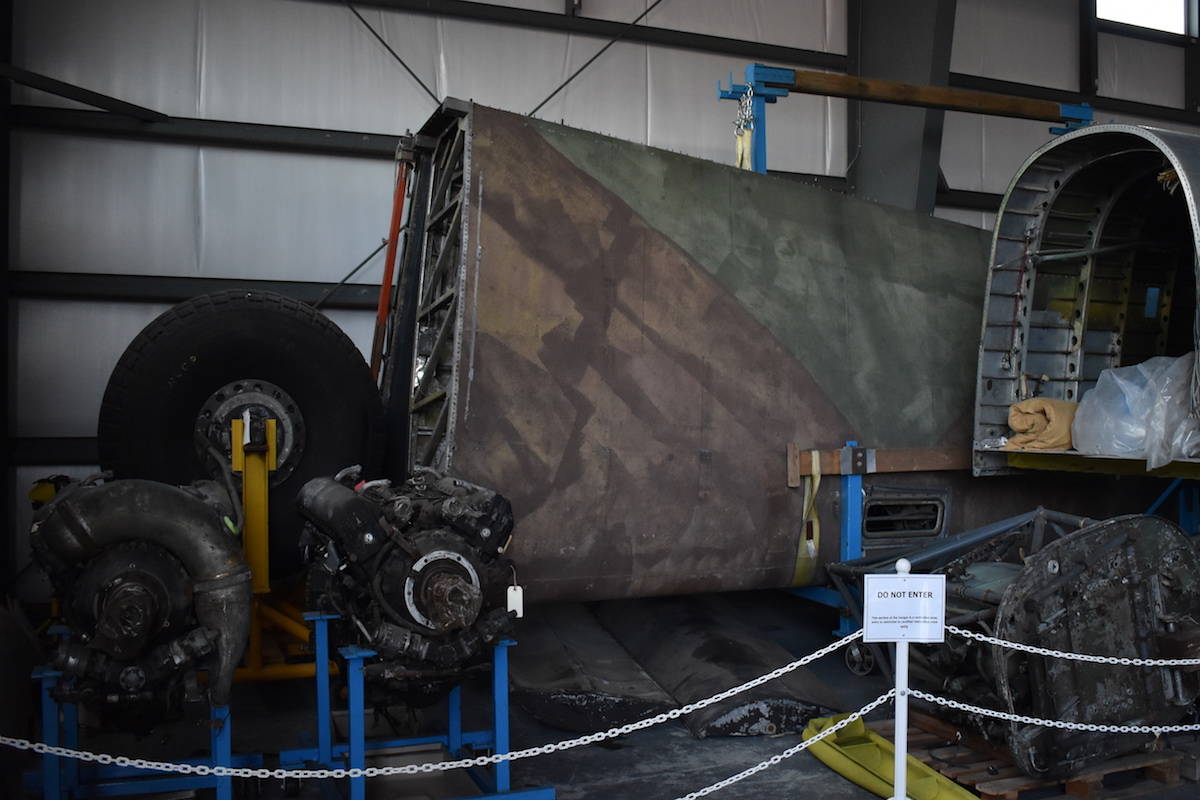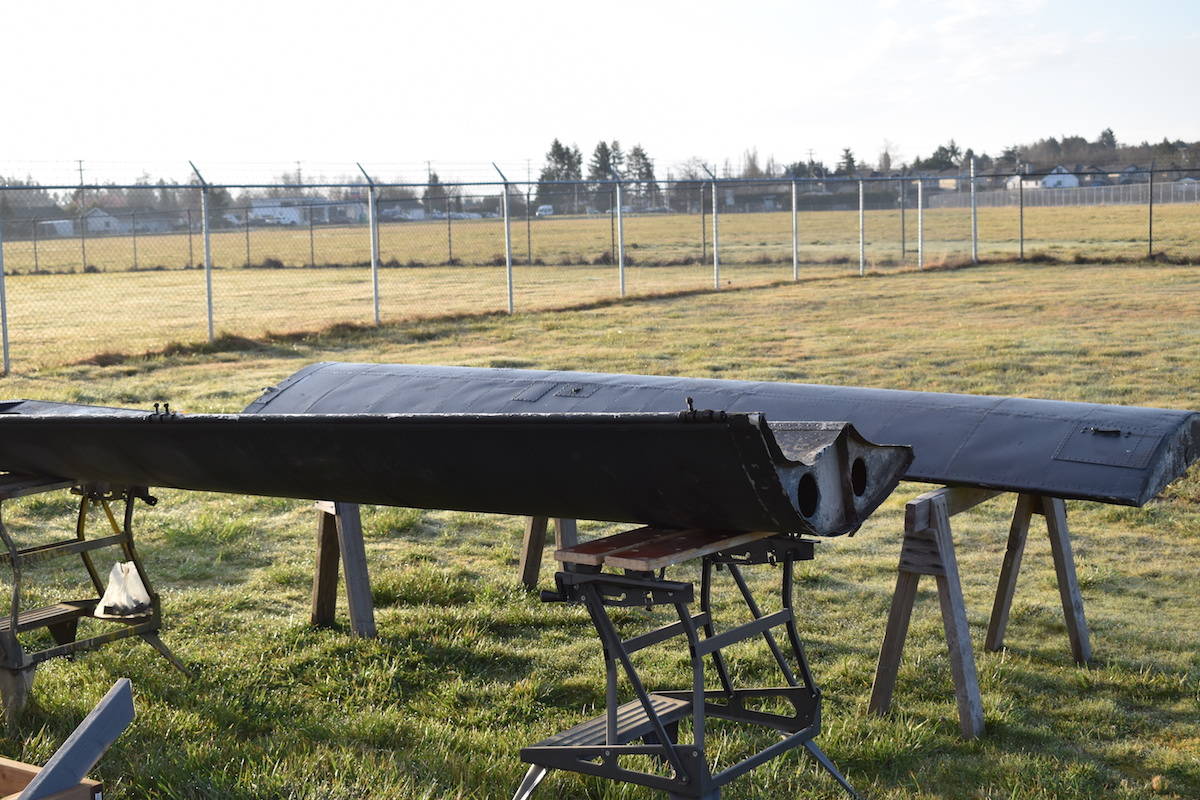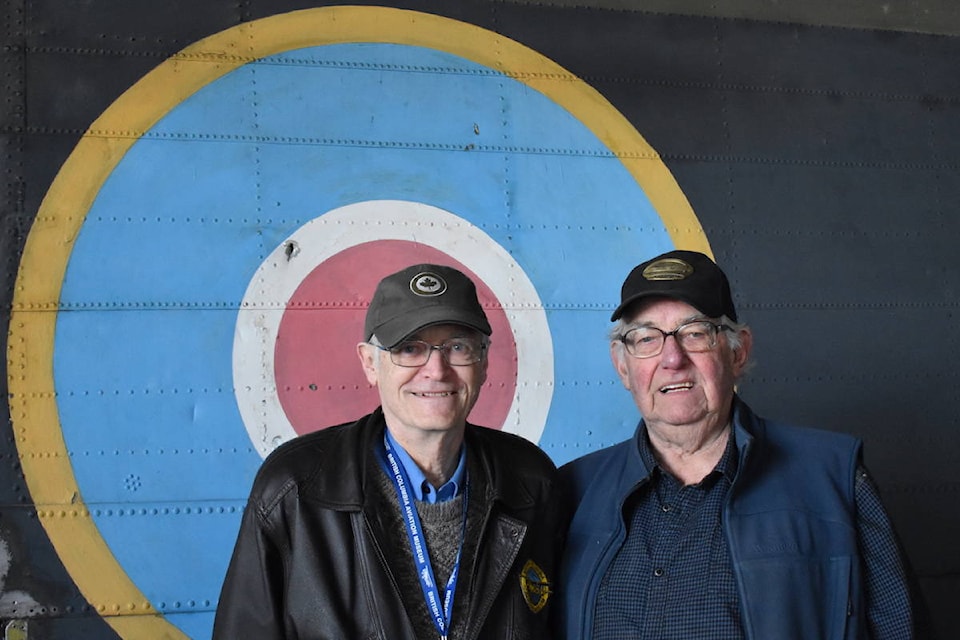As work begins to restore an iconic Second World War Lancaster bomber, the B.C. Aviation Museum acknowledges it will need significant long-term funding to complete the project.
When you think of iconic machines, you might think of a Ferrari F40 or the Bismarck battleship, but for air enthusiasts few aircraft are as recognizable or admired as the Lancaster.
RELATED: BCAM slated to get one of last remaining Lancaster bombers
The BCAM in North Saanich managed to acquire one of these machines, and they plan to restore it to flight condition with the help of Victoria Air Maintenance, so it will be one of only three that are airworthy anywhere in the world. Over 7,000 of the aircraft were built for British and Commonwealth forces, but only 17 survive.
“We’ve undertaken to restore it to flight condition,” says Mac Duffield a retired pilot and volunteer at the museum, before adding sadly “but that doesn’t mean we’ll be able to fly it. We can’t afford to fly the aircraft we currently have because of the insurance.”
This particular Lancaster, serial number FM 104, was built in Ontario and sent to Europe in 1944 as the Second World War wound down.
At the end of the war, it was flown on the East Coast as part of 407 squadron flying out of Comox.
After it was retired in 1965, it was mounted on a pole beside Lake Ontario, exposed to the elements for 25 years and eventually ended up in a Toronto museum. After the museum closed, the B.C. Aviation Museum secured the FM 104 for a nominal fee, albeit with $89,000 shipping costs.
“There’s a lot of interest in it at the moment. I’m enthusiastic about it and excited for the community,” says Duffield.
Jeff Phillips, another knowledgeable museum volunteer adds, “When it got out that we have a Lancaster, we’ve had over 50 new memberships of guys wanting to work on it.”
Despite the BCAM’s impressive organization and enthusiasm, the cost of restoration is likely to hit $10 million with each of the four Rolls Royce Merlin engines costing $250,000 each to rebuild.
“The museum has pretty much always paid its way and never gone into severe financial distress. This project though, will require additional funding over and beyond what the museum normally needs,” says Duffield.
The Lancaster was the Royal Air Force’s heaviest bomber and no other Second World War plane could match its bombload capacity. Seven to nine men crewed it, and to many, its maneuverability, reliability and unique look secured its place in aviation history.
ALSO READ: UVic’s cutting-edge centre leading the way in drones and AI
But for the volunteers of BCAM, it is more personal than that. This plane is part of Canadian aviation heritage. To Duffield the aircraft is more than a collection of parts.
“I feel privileged to work with it. I had a very good friend, Gilbert Scott, who flew one tour on Lancasters as a bomber navigator, one as a pathfinder and he survived the war. When I work on this I think about him. A wonderful gentleman and a really good friend.”
nick.murray@peninsulanewsreview.com
Like us on Facebook and follow us on Twitter
